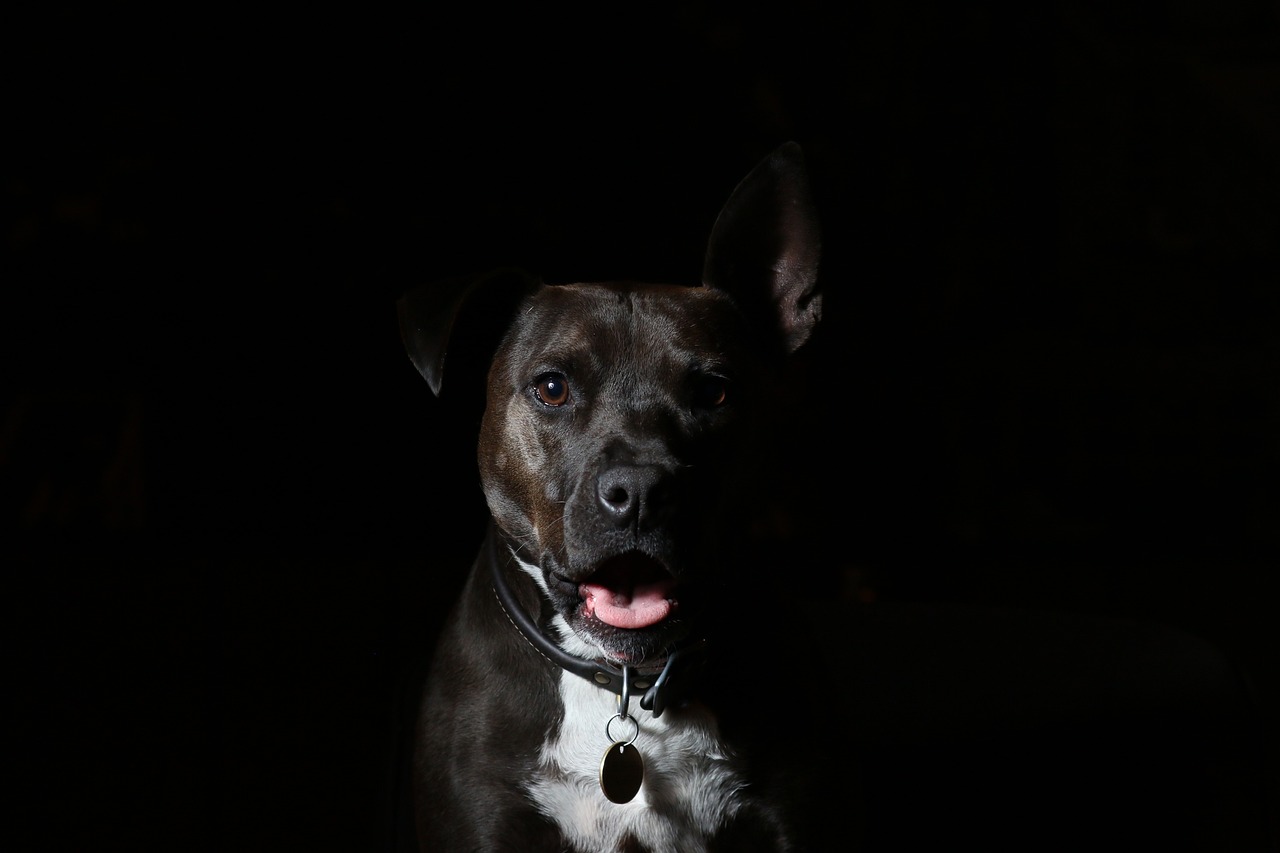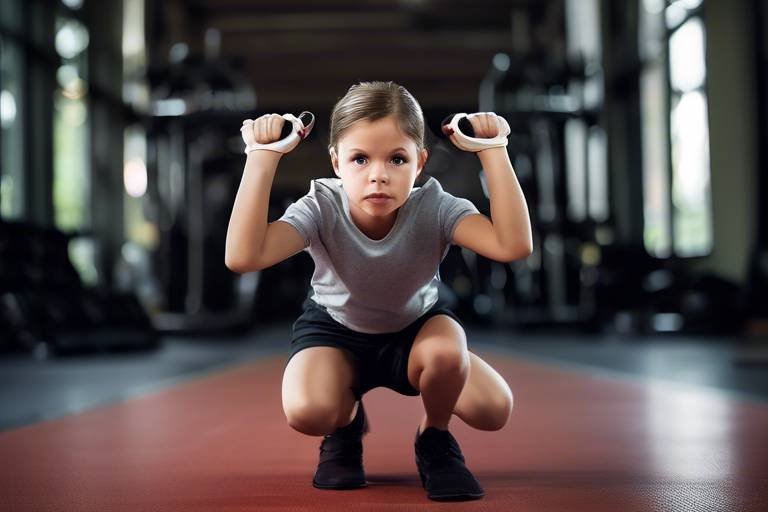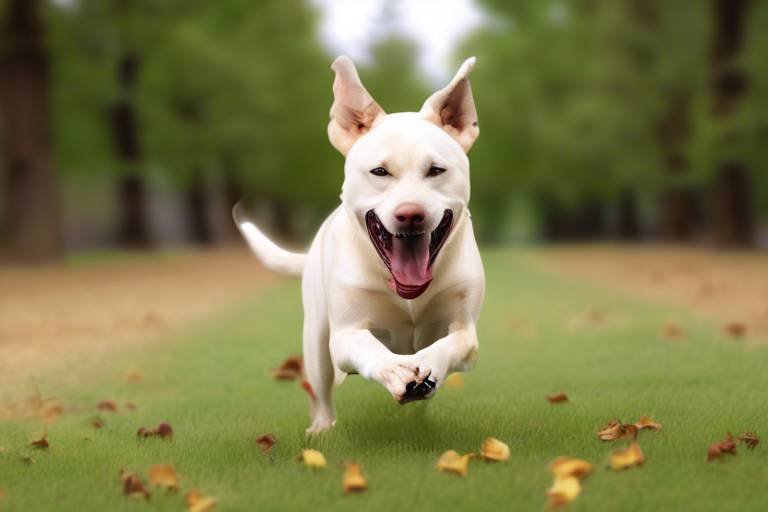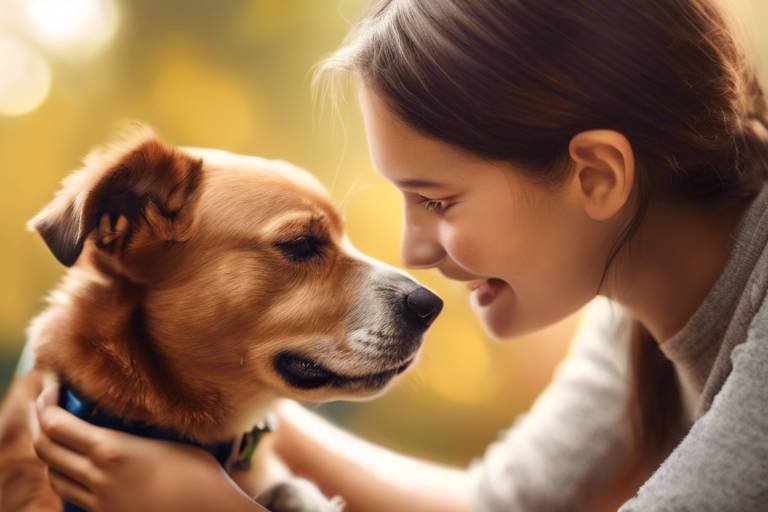The Role of Leadership in Dog Training
When it comes to dog training, the concept of leadership is often overlooked, yet it holds a pivotal role in fostering a successful and harmonious relationship between a dog and its trainer. Imagine trying to navigate a ship through turbulent waters without a captain; similarly, without a clear leader, a dog's training can become chaotic and ineffective. Leadership in dog training is not about being domineering or harsh; rather, it's about establishing a bond built on trust and respect. This article will explore how effective leadership can transform the training experience for both the dog and the trainer, leading to a more rewarding companionship.
At its core, leadership in dog training involves guiding a dog through the learning process by setting clear expectations and providing consistent feedback. Just as a teacher shapes the minds of students, a dog trainer shapes the behavior of their canine companion. The essence of good leadership lies in understanding the individual needs of the dog and adapting training techniques accordingly. This approach not only enhances the dog's learning experience but also strengthens the emotional bond between the trainer and the dog.
As we delve deeper into the nuances of dog training, we'll uncover various techniques that effective leaders employ to nurture a positive learning environment. From establishing trust and respect to using positive reinforcement methods, each aspect plays a crucial role in achieving training success. It’s essential to remember that every dog is unique, and what works for one might not work for another. Thus, a good leader remains flexible, adapting their strategies to meet the specific needs of their furry friend.
In the following sections, we will explore how to create a structured training environment, the importance of communication skills, and the vital role of consistency in establishing a well-behaved dog. By understanding the various facets of leadership in dog training, trainers can enhance their skills and create a more fulfilling experience for both themselves and their dogs.

Understanding Leadership in Dog Training
This article explores the vital role leadership plays in effective dog training, highlighting techniques, benefits, and the bond between trainer and dog to foster a harmonious relationship.
Leadership in dog training is not just about being in charge; it’s about establishing a mutual respect and trust between you and your furry friend. Imagine a world where your dog looks up to you not out of fear, but out of admiration and love. This is the essence of good leadership in dog training. A great leader possesses certain characteristics that significantly influence a dog's behavior and learning process. These traits include patience, consistency, and the ability to communicate effectively. When you embody these qualities, your dog is more likely to respond positively to your commands and guidance.
One of the most important aspects of leadership is understanding that dogs are pack animals. They instinctively look for a leader, someone who can guide them through the complexities of their environment. As a trainer, you become that leader. This doesn’t mean you need to be domineering; rather, you should aim to be a trustworthy guide. By demonstrating confidence and calmness, you help your dog feel secure and more willing to learn. Think of it like being the captain of a ship; your dog is the crew, and they need you to steer them in the right direction.
Moreover, effective leadership in dog training involves recognizing that each dog is unique. Just like people, dogs have different personalities, learning styles, and emotional needs. A good leader adapts their approach to fit the individual dog, which can make a world of difference in training outcomes. For example, some dogs respond better to verbal praise, while others may thrive on physical affection or treats. By understanding these differences, you can tailor your leadership style to meet your dog’s specific needs.
In summary, understanding leadership in dog training is about establishing a strong bond based on trust and respect. When you lead with confidence and adapt to your dog’s unique personality, you create an environment where learning can flourish. This sets the stage for successful training sessions, making it easier for your dog to absorb new commands and behaviors. It’s a two-way street; as you invest in your leadership skills, your dog will respond with greater enthusiasm and cooperation.
Building trust and respect between the trainer and the dog is crucial. Here, we delve into methods for fostering a positive relationship that encourages cooperation and effective communication during training sessions.
Positive reinforcement is a powerful tool in dog training. This subheading elaborates on various reinforcement methods that leaders can employ to motivate and encourage desired behaviors in their dogs.
Implementing a reward system can enhance training effectiveness. This section outlines different types of rewards and how they can be strategically used to reinforce good behavior in dogs.
Timing and consistency are vital in positive reinforcement. This part discusses how to effectively time rewards and maintain consistency to achieve the best training outcomes.
Effective communication is key in dog training. This subheading explores the various verbal and non-verbal communication skills that leaders should develop to better connect with their dogs.
A structured training environment promotes discipline and focus. This section emphasizes the importance of setting clear boundaries and routines to facilitate successful training sessions.
Establishing clear boundaries helps dogs understand expectations. This subheading discusses strategies for setting and maintaining boundaries during training to ensure a well-behaved pet.
Routine and consistency are critical for effective learning. This section highlights the significance of regular training schedules and consistent commands to reinforce learning in dogs.
Q: How long does it take to train a dog?
A: The time it takes to train a dog varies widely based on the dog's age, breed, and the complexity of the commands being taught. Generally, consistent training sessions of 5-10 minutes each day can lead to effective results over weeks or months.
Q: Can I train my dog without professional help?
A: Yes, many dog owners successfully train their pets at home using resources like books, videos, and online courses. However, professional trainers can provide valuable guidance, especially for more challenging behaviors.
Q: What if my dog doesn’t respond to commands?
A: If your dog isn’t responding, it may be due to a lack of motivation or understanding. Reassess your training techniques, ensure you’re using positive reinforcement, and consider consulting a professional trainer for additional support.

Establishing Trust and Respect
When it comes to dog training, establishing trust and respect is not just important; it’s absolutely vital. Think of it like building a house: without a solid foundation, everything else is bound to crumble. A dog that trusts its trainer is more likely to respond positively to commands and engage in training sessions with enthusiasm. But how do we lay that foundation? It begins with understanding that dogs, much like humans, thrive in an environment where they feel safe and respected.
One of the first steps in fostering this trust is to create a positive atmosphere during training sessions. Dogs are incredibly intuitive creatures; they can sense your emotions and energy. If you approach training with a calm and confident demeanor, your dog will pick up on that and feel more secure. Consistency in your actions and commands also plays a crucial role. If your dog knows what to expect, it will feel more at ease and be more willing to cooperate. Establishing a routine not only helps in building trust but also makes training sessions more productive.
Another essential aspect of building trust is effective communication. Dogs may not understand every word we say, but they are masters at picking up on tone and body language. Use a warm and encouraging tone when giving commands, and pair your words with clear hand signals. This combination of verbal and non-verbal cues can significantly enhance your dog's understanding and compliance. Remember, communication is a two-way street; listen to your dog’s responses, as they will tell you a lot about how they’re feeling. Are they eager to engage, or do they seem hesitant? Adjust your approach based on their feedback.
Furthermore, patience is key. Just like any relationship, trust takes time to develop. Celebrate small victories during training sessions, and don’t rush the process. If your dog struggles with a command, approach it with understanding rather than frustration. Positive reinforcement, as discussed later, is an excellent way to encourage your dog and build their confidence. By rewarding them for their efforts, you’re not only teaching them desired behaviors but also showing them that you respect their progress.
To summarize, establishing trust and respect in dog training involves:
- Creating a positive training environment
- Maintaining consistency in commands and routines
- Using effective communication techniques
- Exercising patience and celebrating small successes
By focusing on these elements, you’ll not only enhance your dog’s learning experience but also strengthen the bond between you and your furry friend. This bond is the heart of successful dog training, transforming it into a rewarding journey for both of you.
Q: How long does it take to build trust with my dog?
A: Building trust can vary from dog to dog, but with consistency, patience, and positive interactions, you can start seeing improvements within a few weeks.
Q: What if my dog seems fearful during training?
A: If your dog appears fearful, take a step back. Reassess your approach, ensure that the environment is comfortable, and consider using more positive reinforcement techniques to encourage them.
Q: Can I train an older dog to trust me?
A: Absolutely! Trust can be built at any age. Just remember to be patient and adjust your training methods to suit your older dog’s needs.
Positive Reinforcement Techniques
When it comes to dog training, one of the most effective methods that a leader can employ is positive reinforcement. This technique is all about rewarding your dog for good behavior, which not only encourages them to repeat those behaviors but also strengthens the bond between you and your furry friend. Imagine training as a game where every time your dog performs a trick or follows a command, they score points—points that come in the form of treats, praise, or playtime. This approach turns training into a fun and engaging experience for both of you!
Positive reinforcement can take many forms, and understanding how to effectively use it can significantly impact your dog's learning process. For instance, you might use treats as a reward, but it’s crucial to choose the right ones. Dogs are motivated by different things, so it’s a good idea to experiment with various options to find what excites your pup the most. Some dogs may respond better to tasty morsels, while others might be more motivated by a favorite toy or a fun game of fetch. The key is to identify what drives your dog and leverage that during training sessions.
Another essential aspect of positive reinforcement is the timing of the rewards. Dogs live in the moment and are more likely to connect the reward with the behavior if it is given immediately after they perform the desired action. For example, if your dog sits on command, offering a treat right away helps them associate the action of sitting with the reward. This immediate feedback is crucial for effective learning. If you wait too long to reward them, they may become confused about what behavior is being rewarded.
Consistency is also vital when using positive reinforcement techniques. It’s important to establish a clear set of rules and stick to them. If you reward your dog for sitting one day but ignore them the next, they might not understand what is expected of them. Creating a structured environment where the same commands and rewards are consistently applied will help your dog learn faster and more effectively. Here’s a quick table summarizing the key elements of positive reinforcement:
| Element | Description |
|---|---|
| Rewards | Treats, toys, or praise given immediately after desired behavior. |
| Timing | Deliver rewards right after the dog performs the desired action. |
| Consistency | Apply the same commands and rewards every time to avoid confusion. |
Incorporating these positive reinforcement techniques into your training sessions can create a more enjoyable atmosphere for both you and your dog. Instead of focusing on what your dog is doing wrong, you’ll be celebrating their successes, no matter how small. This shift in perspective not only makes training more enjoyable but also fosters a deeper connection between you and your pet. After all, who doesn’t love a little praise and a tasty treat?
As you continue to practice positive reinforcement, you’ll likely notice that your dog becomes more eager to participate in training sessions. They’ll start to look forward to these moments, knowing that good behavior leads to fun rewards. Just remember, the journey of training your dog is not a sprint; it’s a marathon. Be patient, stay positive, and enjoy the process of learning together!
- What is positive reinforcement? Positive reinforcement is a training method that involves rewarding a dog for good behavior to encourage them to repeat those actions.
- How do I choose the right reward for my dog? Experiment with different treats, toys, and activities to find out what motivates your dog the most.
- Why is timing important in positive reinforcement? Immediate rewards help your dog associate the behavior with the reward, making it easier for them to learn.
- Can I use positive reinforcement for all types of training? Yes! Positive reinforcement can be effective for teaching commands, tricks, and even addressing behavioral issues.
Reward Systems
Implementing a reward system in dog training is like having a treasure map leading to a well-behaved pooch. By effectively using rewards, you can create a positive learning environment that encourages your dog to repeat desirable behaviors. Think of it this way: when dogs receive a reward for a good deed, it's like a kid getting a cookie for finishing their homework. It motivates them to keep going!
There are several types of rewards you can use, and the key is to find what makes your dog wag their tail the hardest. Here are some common reward categories:
- Treats: These are often the go-to rewards. Small, tasty morsels can be a great motivator, especially when they are something your dog loves. Just remember to keep the treats small to avoid overfeeding!
- Praise: Verbal encouragement can go a long way. A simple "Good boy!" or "Well done!" can make your dog feel like a superstar.
- Toys: Some dogs get particularly excited about their favorite toy. Incorporating playtime as a reward can make training sessions more enjoyable.
- Affection: A good belly rub or a scratch behind the ears can be just as rewarding as a treat for many dogs. They thrive on love and attention!
To make the most out of your reward system, it’s important to be mindful of timing. Deliver the reward immediately after your dog performs the desired behavior. This instant feedback helps your dog make the connection between the action and the reward. For example, if your dog sits on command, give them a treat right away. If you wait too long, your dog might forget what they did to earn the reward, and confusion can set in.
Moreover, consistency is crucial. If you reward your dog for sitting one day but ignore it the next, your dog will be left scratching their head (figuratively, of course). Make sure that everyone in your household is on the same page regarding what behaviors are rewarded. A consistent approach will reinforce learning and help your dog understand what is expected of them.
In summary, a well-structured reward system not only enhances the effectiveness of your training sessions but also strengthens the bond between you and your furry friend. As you navigate through the world of dog training, remember that rewards should be tailored to your dog's preferences, used consistently, and timed perfectly. This way, you’ll be paving the path to a happy, obedient companion!
Timing and Consistency
When it comes to dog training, timing and consistency are not just buzzwords; they are the backbone of effective learning. Imagine trying to teach a child the rules of a game without ever explaining when to play or how to play. Just like children, dogs thrive on clarity and understanding. If you reward your dog for sitting after they’ve already jumped up on you, they’ll be confused about what behavior you’re actually praising. This is where the importance of timing comes into play.
To truly grasp the significance of timing in dog training, think of it as a dance. Each move must be synchronized; otherwise, the performance falls flat. The moment you see your dog exhibit the desired behavior, that’s your cue to reward them. This immediate feedback helps your dog associate the action with the reward, making it more likely they will repeat the behavior in the future. For instance, if your dog sits when you ask them to, giving them a treat right at that moment reinforces the positive action.
Now, let’s talk about consistency. Just like a well-rehearsed dance routine, consistency is key to making sure your dog understands what’s expected of them. If you use different commands for the same action or occasionally reward them for behaviors you usually ignore, your dog will be left scratching their head in confusion. Imagine telling a child to clean their room but sometimes letting them off the hook because you’re too tired. What message does that send? The same applies to our furry friends.
Here are some practical tips for ensuring both timing and consistency in your training sessions:
- Use the same command words: Stick to one word or phrase for each action you want your dog to learn. For example, always use "sit" instead of mixing in "sit down" or "take a seat."
- Reward immediately: As mentioned, give a treat or praise right after the desired behavior occurs. This helps your dog make the connection.
- Be consistent with rewards: If you reward your dog with a treat one time, don’t switch to verbal praise the next time. Choose a method and stick with it.
In addition, keeping a regular training schedule can significantly enhance both timing and consistency. Dogs are creatures of habit and thrive on routine. By setting aside specific times each day for training, you not only reinforce the learning process but also build anticipation and eagerness in your dog. They’ll learn to expect training sessions, making them more engaged and willing to participate.
In summary, mastering the art of timing and consistency in dog training can transform your sessions from frustrating to fulfilling. By rewarding your dog promptly and maintaining a consistent approach, you’ll foster a strong bond built on trust and understanding. Your dog will not only learn commands but will also look forward to training time, making it a rewarding experience for both of you!
Q: How can I improve my timing in dog training?
A: Practice makes perfect! Start by observing your dog closely during training. Use a clicker or a verbal cue to mark the exact moment they perform the desired behavior, then reward them immediately.
Q: What if I can't be consistent due to a busy schedule?
A: It’s understandable! Try to set short, manageable training sessions that fit into your day. Even 5-10 minutes of focused training can be effective if done consistently.
Q: Can I use different rewards for different behaviors?
A: Absolutely! Just ensure that the timing and method of delivery remain consistent. For example, you might use treats for more challenging commands and verbal praise for simpler ones.
Communication Skills for Leaders
When it comes to dog training, effective communication is not just a skill; it's an art. Imagine trying to have a conversation with someone who speaks a different language. Frustrating, right? That's how your dog feels if you don’t communicate clearly. Good leaders understand that both verbal and non-verbal cues are essential in establishing a connection with their furry companions. This connection is the foundation upon which trust and respect are built.
Verbal communication involves the commands you use, the tone of your voice, and even the words you choose. Dogs are incredibly perceptive to the nuances in our voices. For instance, using a cheerful tone when praising your dog can create a positive association with the behavior you want to encourage. On the other hand, a firm but calm voice is crucial when correcting undesirable behavior. It's all about finding that balance. Just as you wouldn't yell at a friend for making a mistake, you shouldn’t yell at your dog either. Instead, use a calm and assertive voice to guide them.
Non-verbal communication is equally important. Dogs are experts at reading body language. Have you ever noticed how your dog can tell when you’re upset, even if you haven’t said a word? This is because they pick up on your posture, facial expressions, and even your breathing patterns. To be an effective leader, you must be aware of how your body language communicates your intentions. For example, standing tall and relaxed can convey confidence, while crouching down can signal that you’re inviting your dog to engage with you. This can be especially useful during training sessions, as your dog will respond better if they feel your energy is positive and inviting.
To enhance your communication skills, consider the following strategies:
- Practice Consistency: Use the same words and gestures for commands. This helps your dog understand what you expect.
- Observe Your Dog: Pay attention to how your dog responds to your cues. Are they confused? Adjust your approach accordingly.
- Stay Calm: Your emotional state can affect your dog's behavior. If you’re anxious or frustrated, your dog may become agitated too.
Incorporating these strategies into your training routine will not only improve your dog's learning but also strengthen the bond between you. Remember, training is not just about teaching commands; it's about creating a shared language that fosters understanding and cooperation.
As you develop your communication skills, don’t forget the importance of patience. Just like any relationship, building effective communication takes time. Celebrate the small victories along the way, and don't hesitate to seek help or resources if you feel stuck. Whether it's a training class, a book, or even online videos, there are plenty of tools available to help you become a more effective communicator and leader in your dog's life.
Q: How can I improve my dog's responsiveness to commands?
A: Consistency is key. Use the same command for the same action, and ensure everyone in your household does the same. Positive reinforcement, like treats or praise, can also encourage your dog to respond better.
Q: What should I do if my dog seems confused by my commands?
A: Take a step back and assess your communication. Simplify your commands and ensure your body language aligns with what you're saying. Sometimes, less is more!
Q: How important is tone of voice in dog training?
A: Very important! Dogs respond to the tone even more than the words themselves. A happy, upbeat tone can motivate your dog, while a calm, firm tone can help correct unwanted behavior.

Creating a Structured Training Environment
Creating a structured training environment is not just about having a designated space for your dog to learn; it’s about cultivating an atmosphere that promotes discipline, focus, and respect. Think of it as setting the stage for a performance where both you and your dog are the stars. Just as actors need a clear script and direction, your dog needs defined boundaries and routines to thrive. A well-structured environment helps your dog understand what is expected of them, making the training process smoother and more enjoyable.
To begin with, establishing clear boundaries is paramount. Dogs, like children, thrive when they know the rules of the game. If you allow your dog to jump on the couch sometimes but scold them at other times, they’ll be confused about what behavior is acceptable. Setting consistent rules is essential. For instance, if you decide that the living room is off-limits, stick to that decision. This consistency helps your dog learn and respect the boundaries you’ve set, leading to a more harmonious relationship.
Moreover, creating a structured training environment involves developing a routine. Dogs are creatures of habit, and they feel more secure when they know what to expect. A regular training schedule not only reinforces learning but also strengthens the bond between you and your dog. Imagine starting each day with a short training session; it’s like a morning ritual that energizes both of you. Incorporate training into your daily routine, whether it’s a quick session before breakfast or a fun game during your evening walk. The key is to be consistent with your timing.
In addition to boundaries and routines, consider the physical layout of your training space. A clutter-free environment minimizes distractions and allows your dog to focus on you. If your living room is filled with toys, it might be hard for your dog to concentrate on learning new commands. Create a designated training area that is calm and free from interruptions. This space should be comfortable for both you and your dog, fostering a positive atmosphere where learning can flourish.
It’s also important to recognize that the training environment should evolve as your dog progresses. As they master basic commands, you can gradually introduce more distractions or practice in different settings, such as the park or a friend’s backyard. This not only keeps training exciting but also helps your dog learn to listen to you in various situations, reinforcing their training in real-world scenarios.
Lastly, remember that training is as much about communication as it is about structure. Use clear, consistent commands and body language to guide your dog through the learning process. This clarity will help your dog understand what you are asking, leading to quicker learning and a more enjoyable experience for both of you. In essence, a structured training environment is a blend of clear boundaries, consistent routines, a distraction-free space, and effective communication. By focusing on these elements, you’ll set your dog up for success, making training a rewarding journey.
- Why is a structured environment important for dog training?
A structured environment helps dogs understand expectations, reduces confusion, and promotes effective learning. - How can I establish clear boundaries with my dog?
Be consistent with rules and enforce them every time. If a behavior is unacceptable, ensure you address it consistently. - What should I include in my dog's training routine?
Incorporate regular training sessions, practice commands, and include fun activities to keep your dog engaged. - Can I change the training environment as my dog learns?
Absolutely! Gradually introducing new environments can help your dog learn to focus and respond to commands in different settings.
Setting Clear Boundaries
When it comes to dog training, is like drawing a map for your furry friend. Just as we need road signs to navigate safely, dogs thrive when they have clear guidelines to follow. Imagine a world where everything is chaotic—without boundaries, your dog might feel confused, anxious, or even rebellious. Establishing these boundaries helps your dog understand what behaviors are acceptable and which ones are not, creating a sense of security and predictability in their life.
One effective way to set boundaries is through consistent commands. For instance, if you decide that jumping on the couch is a no-go, it’s essential to enforce this rule every single time. If you occasionally let your dog on the couch when you’re in a good mood, they’ll be left wondering, “Is today a couch day or not?” Consistency is key! Dogs are great at picking up on patterns, so the more consistent you are, the quicker they’ll learn.
Moreover, using positive reinforcement when your dog respects these boundaries can further solidify their understanding. For example, if your dog chooses to sit calmly on the floor instead of jumping on the couch, reward them with a treat or praise. This not only reinforces the desired behavior but also builds a stronger bond between you and your dog, as they learn that good behavior leads to positive outcomes.
To help visualize this, let’s consider a simple table that outlines some common boundaries and the corresponding actions you can take:
| Boundary | Action | Positive Reinforcement |
|---|---|---|
| No jumping on furniture | Redirect to a designated spot | Give a treat when they comply |
| Stay off the kitchen counter | Use a firm “off” command | Praise when they obey |
| Leash training | Stop walking when they pull | Reward calm walking |
In addition to verbal commands, non-verbal cues play a significant role in setting boundaries. Dogs are incredibly perceptive to body language. For example, if you stand tall and assertive, your dog is more likely to recognize that you mean business. Conversely, slouching or appearing unsure can send mixed signals. Practice maintaining a confident posture and using firm, yet gentle, hand signals to reinforce your commands.
Lastly, remember that patience is essential when establishing boundaries. It’s easy to get frustrated when your dog doesn’t seem to understand, but every dog learns at their own pace. Celebrate the small victories along the way, and don’t hesitate to adjust your approach if something isn’t working. With time, consistency, and love, your dog will learn to respect the boundaries you’ve set, leading to a happier and more harmonious home.
- Why are boundaries important in dog training? Boundaries help dogs understand what behaviors are expected of them, reducing confusion and anxiety.
- How do I maintain consistency in training? Use the same commands and rules every time, and ensure all family members are on the same page.
- What should I do if my dog crosses a boundary? Calmly redirect them to the appropriate behavior and reinforce with positive reinforcement when they comply.
Routine and Consistency in Training
When it comes to dog training, routine and consistency are not just buzzwords; they are the backbone of effective learning. Imagine trying to learn a new skill without any structure or regular practice. How would you feel? Confused, right? Dogs are no different! Establishing a regular training schedule helps your furry friend understand what is expected of them, making the learning process smoother and more enjoyable.
Creating a structured routine means setting aside specific times for training sessions each day. This consistency helps your dog anticipate when they will engage in training, which can lead to improved focus and enthusiasm. For example, you might choose to train your dog every morning before breakfast or in the evening after a walk. The key is to stick to this schedule as closely as possible, as dogs thrive on predictability.
Moreover, using consistent commands is equally important. Just like a teacher uses the same phrases to instruct students, you should use the same words and tones when giving commands to your dog. For instance, if you use the word "sit" one day and "down" the next for the same action, your dog will become confused. Instead, pick a command and stick with it. This way, your dog can learn to associate the word with the action, reinforcing their understanding.
Another aspect of routine and consistency is the reinforcement of learned behaviors. When your dog performs a command correctly, it’s crucial to reward them immediately. This immediate feedback helps them connect the action with the reward, making it more likely they will repeat the behavior in the future. For example, if your dog sits on command, rewarding them with a treat or praise right then and there solidifies their learning.
To illustrate the importance of routine and consistency, consider the following table that outlines a sample weekly training schedule:
| Day | Training Focus | Duration |
|---|---|---|
| Monday | Basic Commands (Sit, Stay) | 15 minutes |
| Tuesday | Leash Training | 20 minutes |
| Wednesday | Recall (Come) | 15 minutes |
| Thursday | Socialization with Other Dogs | 30 minutes |
| Friday | Trick Training (Shake, Roll Over) | 20 minutes |
| Saturday | Review of the Week | 30 minutes |
| Sunday | Rest Day | N/A |
As you can see, a well-structured training routine not only keeps things organized but also ensures that your dog gets a balanced training experience. Remember, the goal is to make learning fun and engaging while reinforcing good behavior through consistent practice. So, the next time you think about training your dog, consider how routine and consistency can make a world of difference in their learning journey.
- How long should each training session be? Ideally, training sessions should last between 10 to 30 minutes, depending on your dog's attention span.
- Can I train my dog at different times each day? While it's possible, maintaining a consistent schedule is more effective for learning.
- What if my dog doesn't respond to commands? If your dog is not responding, it may be due to inconsistency in commands or insufficient reinforcement.
- Is it okay to train my dog only on weekends? Regular training throughout the week is beneficial, but weekend sessions can still be effective if done consistently.
Frequently Asked Questions
- What is the importance of leadership in dog training?
Leadership is crucial in dog training as it establishes a framework of respect and trust between the trainer and the dog. A good leader guides the dog through the learning process, influencing its behavior positively and fostering a strong bond that enhances the training experience.
- How can I build trust and respect with my dog?
Building trust and respect involves consistent communication, positive reinforcement, and creating a safe environment for your dog. Engaging in regular training sessions, rewarding good behavior, and being patient will help your dog feel secure and respected.
- What are some effective positive reinforcement techniques?
Positive reinforcement techniques include using treats, praise, and playtime as rewards for desired behaviors. By consistently rewarding your dog immediately after it performs the desired action, you reinforce the behavior, making it more likely to occur again.
- How important is timing in positive reinforcement?
Timing is everything in positive reinforcement. To effectively reinforce a behavior, the reward must be given immediately after the action. This helps the dog associate the behavior with the reward, leading to quicker learning and better results.
- What communication skills should a dog trainer develop?
A dog trainer should develop both verbal and non-verbal communication skills. Clear commands, a confident tone, and body language that conveys authority and encouragement are essential for effectively connecting with the dog and facilitating learning.
- How can I create a structured training environment?
To create a structured training environment, establish clear boundaries and routines. Consistency in commands and training schedules helps your dog understand expectations, making it easier for them to learn and adapt to training.
- What are the benefits of having a routine in dog training?
A routine in dog training helps reinforce learning by providing a predictable structure. Regular training sessions and consistent commands allow your dog to understand what is expected of them, leading to improved behavior and faster learning.



















